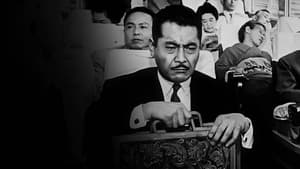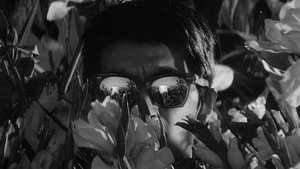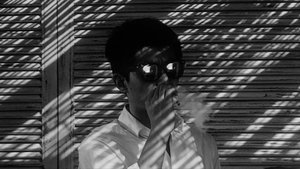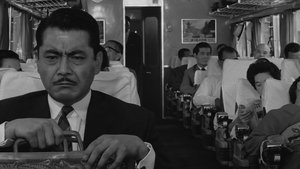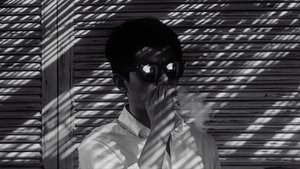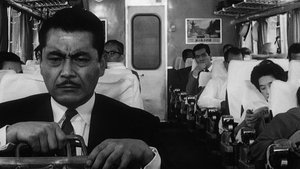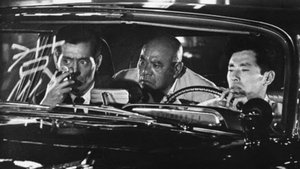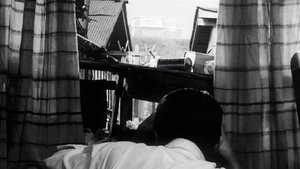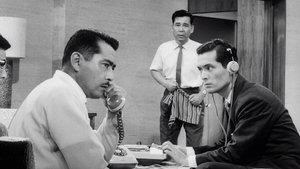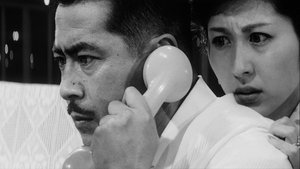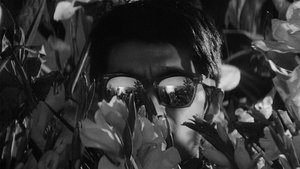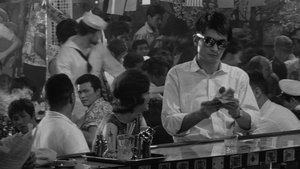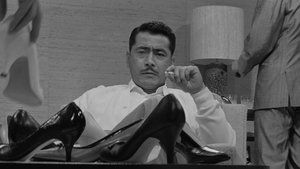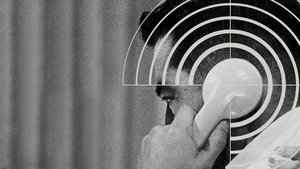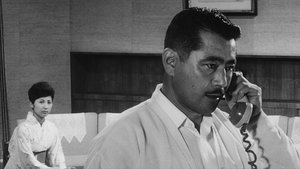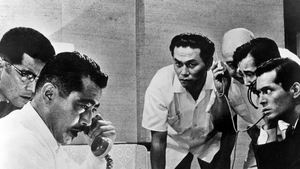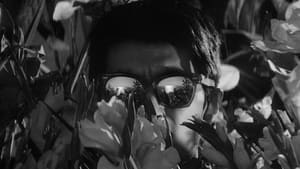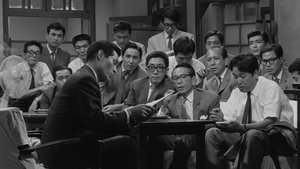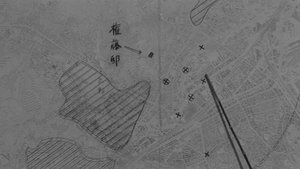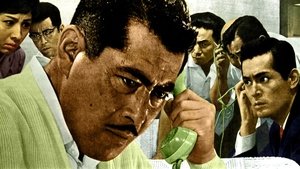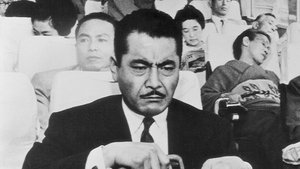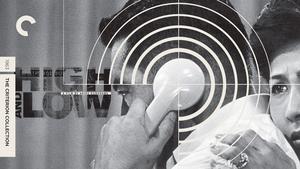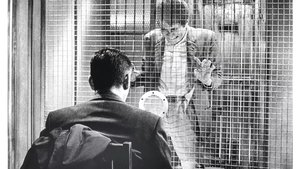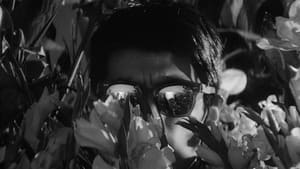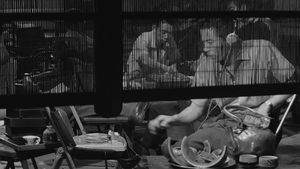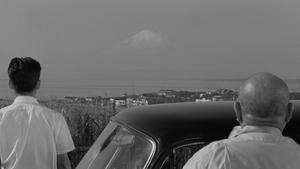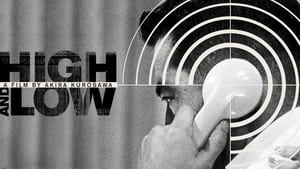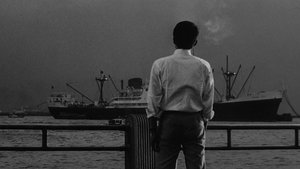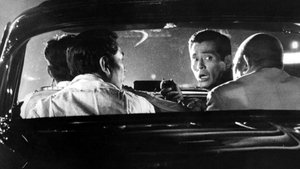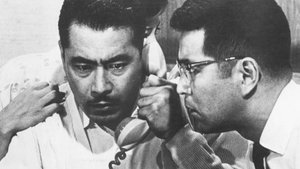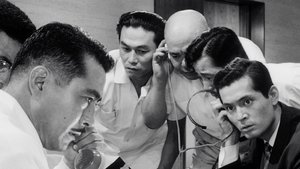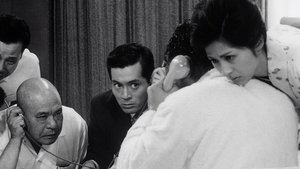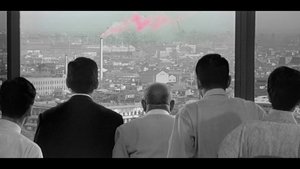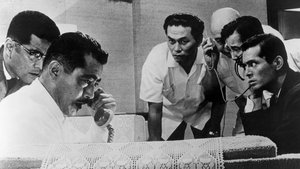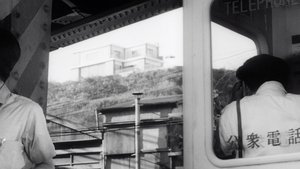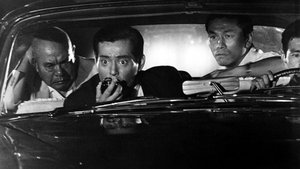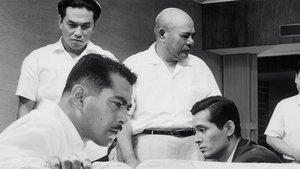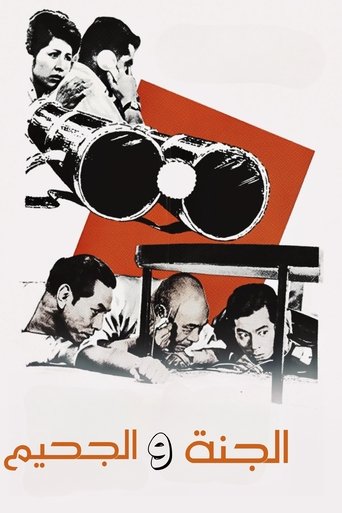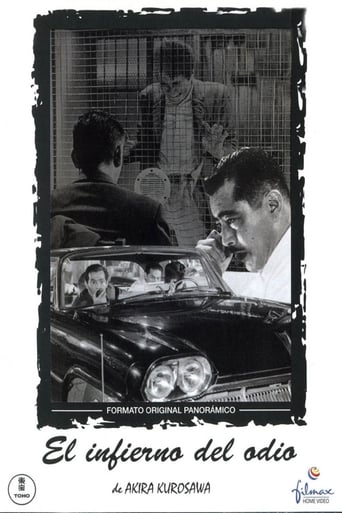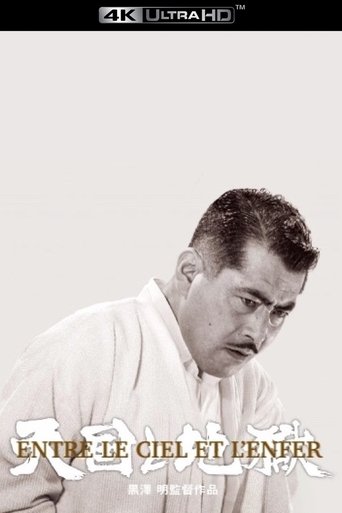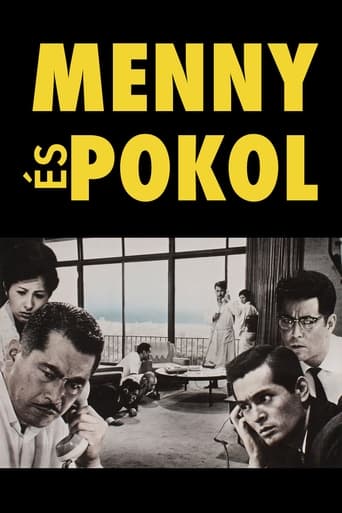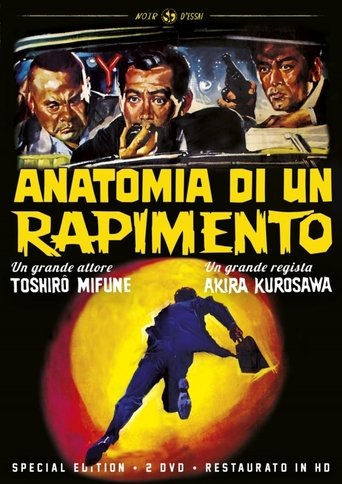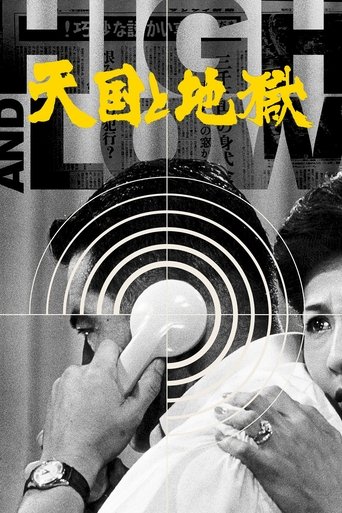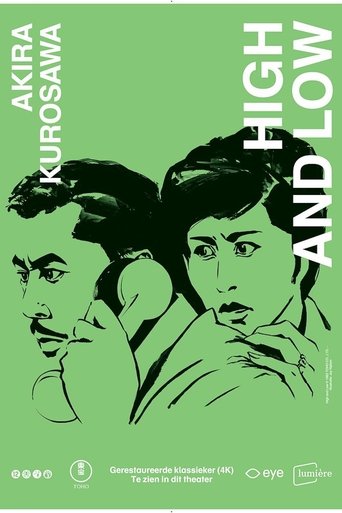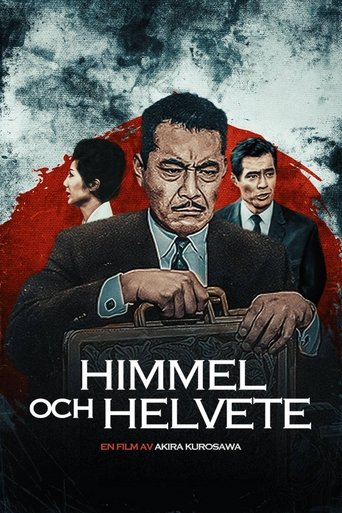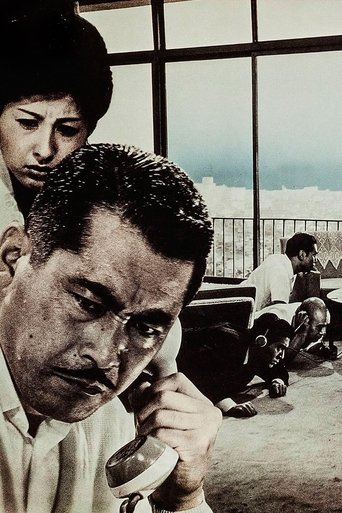
High and Low
Stark, intense drama almost beyond belief!
1963 | 142m | Japanese
Popularity: 3 (history)
| Director: | Akira Kurosawa |
|---|---|
| Writer: | Ryuzo Kikushima, Hideo Oguni, Akira Kurosawa, Evan Hunter, Eijiro Hisaita |
| Staring: |
| In the midst of an attempt to take over his company, a powerhouse executive is hit with a huge ransom demand when his chauffeur's son is kidnapped by mistake. | |
| Release Date: | Mar 01, 1963 |
|---|---|
| Director: | Akira Kurosawa |
| Writer: | Ryuzo Kikushima, Hideo Oguni, Akira Kurosawa, Evan Hunter, Eijiro Hisaita |
| Genres: | Drama, Crime, Thriller |
| Keywords | manager, ransom, kidnapping, blackmail, chauffeur, heroin, police, film noir, black and white, shoe, criminal investigation, japanese noir, yokohama, shōwa era (1926-89), japanese society |
| Production Companies | TOHO, Kurosawa Production |
| Box Office |
Revenue: $0
Budget: $250,000 |
| Updates |
Updated: Oct 04, 2025 Entered: Oct 04, 2025 |
| Name | Character |
|---|---|
| Toshirō Mifune | Kingo Gondo |
| Tatsuya Nakadai | Chief Detective Tokura |
| Kyōko Kagawa | Reiko Gondo |
| Tatsuya Mihashi | Kawanishi, Gondo's secretary |
| Isao Kimura | Detective Arai |
| Kenjirō Ishiyama | Chief Detective 'Bos'n' Taguchi |
| Takeshi Katō | Detective Nakao |
| Takashi Shimura | Chief of Investigation Section |
| Jun Tazaki | Kamiya, National Shoes Publicity Director |
| Nobuo Nakamura | Ishimaru, National Shoes Design Department Director |
| Yūnosuke Itō | Baba - National Shoes Executive |
| Tsutomu Yamazaki | Ginjirô Takeuchi - Medical Intern |
| Minoru Chiaki | First Reporter |
| Eijirō Tōno | Factory Worker |
| Masao Shimizu | Prison Warden |
| Yutaka Sada | Aoki - the Chauffeur |
| Masahiko Shimazu | Shinichi Aoki |
| Toshio Egi | Jun Gondo |
| Kōji Mitsui | Second Reporter |
| Kyū Sazanka | First Creditor |
| Susumu Fujita | Chief of First Investigating Section |
| Kamatari Fujiwara | Junkyard Cook |
| Yoshio Tsuchiya | Detective Murata |
| Kazuo Kitamura | Third Reporter |
| Gen Shimizu | Chief Physician |
| Akira Nagoya | Detective Yamamoto |
| Jun Hamamura | Second Creditor |
| Masao Oda | First Executor at Tax Office |
| Kō Nishimura | Third Creditor |
| Yoshibumi Tajima | Chief Prison Officer |
| Koji Kiyomura | Fish Market Office Worker |
| Hiroshi Unayama | Detective Shimada |
| Yoshisuke Makino | Detective Takahashi |
| Jun Kondô | Identification Center Worker |
| Tomo Suzuki | Detective Koike |
| Senkichi Ōmura | Messenger Passing Note to Intern |
| Kazuo Katō | Identification Center Worker |
| Ikio Sawamura | Yokohama Station Trolley Man |
| Kin Sugai | Female Drug Addict |
| Keiko Tomita | Murder Victim |
| Isao Onoda | Male Drug Addict |
| Seiichi Taguchi | Detective Nakamura |
| Takeo Matsushita | Second Executor at Tax Office |
| Kiyoshi Yamamoto | Detective Ueno |
| Kenji Kodama | Detective Hara |
| Minoru Itō | Detective |
| Haruo Suzuki | Undercover Detective 'Drug Addict' |
| Kōzō Nomura | Detective (uncredited) |
| Name | Job |
|---|---|
| Asakazu Nakai | Director of Photography |
| Ryuzo Kikushima | Screenplay |
| Hideo Oguni | Screenplay |
| Masaru Satō | Original Music Composer |
| Teruyo Nogami | Script Supervisor |
| Ichirō Inohara | Lighting Technician |
| Hiroshi Nezu | Production Supervisor |
| Masaharu Ueda | Assistant Camera |
| Miyuki Suzuki | Costume Design |
| Yoshirō Muraki | Production Design |
| Takao Saitō | Director of Photography |
| Kenjirô Ohmori | Assistant Director |
| Shirō Moritani | Assistant Director |
| Kazutami Hara | First Assistant Camera |
| Ichirô Minawa | Sound Effects Editor |
| Akira Kurosawa | Screenplay, Director, Editor |
| Evan Hunter | Novel |
| Eijiro Hisaita | Screenplay |
| Yōichi Matsue | Assistant Director |
| Masanobu Deme | Assistant Director |
| Yudai Kato | Camera Intern |
| Akio Nojima | Property Master |
| Fumio Yanoguchi | Sound Designer |
| Reiko Kaneko | Editorial Production Assistant |
| Hiromitsu Mori | Lighting Technician |
| Hisashi Shimonaga | Sound Mixer |
| Name | Title |
|---|---|
| Ryuzo Kikushima | Producer |
| Tomoyuki Tanaka | Producer |
| Akira Kurosawa | Associate Producer |
| Organization | Category | Person |
|---|
Popularity History
| Year | Month | Avg | Max | Min |
|---|---|---|---|---|
| 2024 | 4 | 22 | 29 | 15 |
| 2024 | 5 | 24 | 31 | 17 |
| 2024 | 6 | 26 | 47 | 14 |
| 2024 | 7 | 27 | 51 | 18 |
| 2024 | 8 | 21 | 31 | 14 |
| 2024 | 9 | 18 | 30 | 11 |
| 2024 | 10 | 21 | 37 | 11 |
| 2024 | 11 | 18 | 26 | 12 |
| 2024 | 12 | 19 | 32 | 12 |
| 2025 | 1 | 18 | 25 | 12 |
| 2025 | 2 | 14 | 18 | 3 |
| 2025 | 3 | 7 | 22 | 1 |
| 2025 | 4 | 2 | 3 | 1 |
| 2025 | 5 | 2 | 3 | 2 |
| 2025 | 6 | 3 | 5 | 2 |
| 2025 | 7 | 3 | 4 | 2 |
| 2025 | 8 | 4 | 5 | 3 |
| 2025 | 9 | 5 | 5 | 4 |
| 2025 | 10 | 5 | 7 | 4 |
| 2025 | 11 | 5 | 7 | 3 |
Trending Position
| Year | Month | High | Avg |
|---|---|---|---|
| 2025 | 11 | 554 | 833 |
| Year | Month | High | Avg |
|---|---|---|---|
| 2025 | 10 | 561 | 761 |
I didn't take to this initially. The scenario reminded me a little of an episode of "Columbo" - a rather sterile, studio-set environment that came across as quite limiting. Once it gets going, though, it's one of the best crime thrillers I've seen in ages. It all centres around the kidnapping of a s ... mall boy for whom the anger-prone, shoe millionaire "Gondo" (a strong contribution from Toshirô Mifune) is supposed to pay a ransom of ¥30 million - a colossal sum. It turns out, though, that it's not his son who has been snatched - it's the child of his chauffeur. Why ought he to pay? Will he just get on with his impending company takeover or will he risk bankruptcy for the young "Shinichi"? This is a film split into three sections. The first deals with the decision making process around will he/won't he/why should he. Next, the police must try to apprehend this individual. This process is meticulously carried out and Kurosawa has chosen to immerse us in some of that detail, rather than just cursorily skip through it. This makes the whole detection process a much more interesting part of the film; allowing some aspects of the characterisation of the police officers to develop and also introducing some dark humour to the proceedings. Finally, we reach the denouement with it's own rather curious and not entirely explicable agenda. There's an element of "what would you do?", there's a grim depiction of a seamier side of Japanese (heroin-fuelled) culture that we seldom get to see and there is a rather starkly effective dose of humanity presented here as the story juggles aspects of human nature, nurture and good old fashioned greed in quite an effective fashion. It's based on an Ed McBain book (which I haven't read) but the entire project has been successfully subsumed into it's guest culture for a gripping and detailed mystery that flies by.
A well worked, high stake crime thriller. The stakes are deeply personal to our main characters and puts them in an impossible situation. The performances and direction are very solid, the story is engaging and ultimately, it's a simple yet enjoyable film. Kurosawa comments on modern corporate greed ... and poverty in post-war Japan, and he does it very well.
I’m always amazed at how a single film can be fundamentally characterized in multiple ways, but that’s understandable when the picture combines an array of diverse elements, each of which has a validity all its own that can subsequently lead to different overarching interpretations. Such is the case ... with this 1963 film classic from famed Japanese auteur Akira Kurosawa, which provides the cinematic inspiration behind filmmaker Spike Lee’s current reimagination, “Highest 2 Lowest,” now playing theatrically. Like the current iteration, “High and Low” follows the story of a wealthy businessman, Kingo Gondô (Toshirô Mifune), who’s looking to take control of the shoe manufacturing company for which he works, a plan that requires him to leverage his entire personal fortune to make it possible. But, just as he’s about to close the deal, he’s distracted by the alleged kidnapping of his young son (Toshio Egi), a crime for which the perpetrator demands a ransom equal in value to the funds needed to cover the pending transaction. However, not long after hearing about the kidnapping, Gondô learns that the culprit has nabbed the wrong child, erroneously taking the son (Masahiko Shimazu) of his chauffeur (Yutaka Sada). But Gondô is not off the hook: the kidnapper still demands payment of the ransom, even though the crime doesn’t involve his son. This leaves Gondô with a huge moral dilemma: does he use the money to close his business deal or to pay the ransom of his employee’s child? As Gondô grapples with this decision, an intense police investigation ensues to discover the kidnapper’s identity and to figure out a way to retrieve both the victim and the ransom money. Unlike the current film, though, Kurosawa’s version focuses less on the particulars driving this scenario and more intently on the ethical questions that the protagonist is left to wrestle with, issues ultimately symbolic of the divisive class and economic disparities in Japanese society. Indeed, while the picture provides viewers with its share of intense thriller moments, in many regards it’s really more of a morality play, not only where Gondô is concerned, but also in its exploration of the inherent chasms between rich and poor, privileged and impoverished, and control and servitude. (This attribute, in turn, helps to shed light on the nature of the film’s character and the relevance of its original Japanese title, “Tengoku to jigoku,” which translates to “Heaven and Hell,” in my opinion a more fitting appellation that probably should have been retained when renamed in English.) The foregoing aspects of the picture thus distinguish this predecessor work from the current release, even though the exact nature of the nexus between kidnapper and target is not developed as fully here as I believe it should have been (one of the few ways in which the present offering modestly improves upon the original). In addition, there are times in the opening act, as well as in the run-up to the film’s conclusion, when the storytelling could have been a little brisker (the slower pacing style of the period in which the picture was made notwithstanding). Still, this offering’s social and cultural themes are nevertheless intriguing, and their place here has a tendency to grow on audiences as the picture progresses. And those thematic aspects, when combined with the contrast of the narrative’s riveting criminal investigation, make for an intriguing mix, one that undoubtedly accounts for the differing perspectives that this release often evokes among viewers. While “High and Low” may not be Kurosawa’s best work when compared with such pictures as “Rashômon” (1950) and “Ikiru” (1952), it stands out as one of the filmmaker’s most thoughtful and engaging works, one that probes the heaven and hell that reside here on Earth, both individually and at their points of intersection, and how the lines between them can become all too easily blurred, a caution to us all.











![High and Low (1963) Original Trailer [4K]](/extra_thumbs/ELsgPvgDBoY.jpg)

